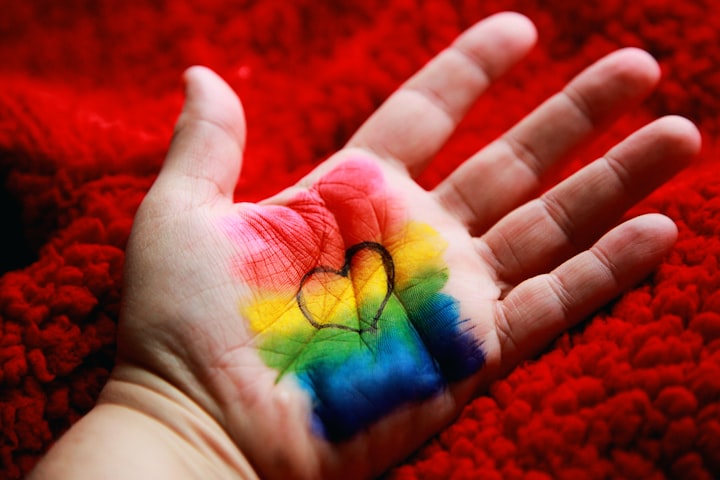Lesbian, Gay, Bisexual, Transgender Pride Month
Every June in the United States

Lesbian, Gay, Bisexual, Transgender (LGBT) Pride, also known as LGBTQ+ Pride or simply Pride, is an annual celebration and recognition of the diversity and rights of the lesbian, gay, bisexual, transgender, and queer (LGBTQ+) community. It is a vibrant and inclusive movement that aims to promote self-affirmation, dignity, equality, and visibility for LGBTQ+ individuals.
Pride events are typically held during the month of June, known as Pride Month, to commemorate the Stonewall Riots of 1969 in New York City. The Stonewall Riots marked a significant turning point in the LGBTQ+ rights movement, as it was a series of spontaneous demonstrations by the LGBTQ+ community in response to police raids on the Stonewall Inn, a popular gay bar at the time. These events galvanized the community, sparking a wave of activism and advocacy for LGBTQ+ rights.
Since the Stonewall Riots, Pride has grown into a global movement, with celebrations taking place in cities around the world. It has become a symbol of resilience, progress, and the ongoing fight for equality. While Pride events are often associated with joyful festivities, it is essential to remember that the movement's origins lie in the struggle for basic human rights and social justice.
One of the primary purposes of LGBTQ+ Pride is to provide a platform for members of the community to express their identities openly and authentically. Pride events often include parades, marches, parties, concerts, film screenings, and educational workshops. These events offer LGBTQ+ individuals a space to celebrate their diversity, connect with one another, and find a sense of belonging and acceptance.
Pride is also an opportunity to raise awareness about the challenges and discrimination faced by the LGBTQ+ community. Despite significant progress in recent years, LGBTQ+ individuals continue to face various forms of discrimination, including homophobia, biphobia, transphobia, and systemic inequality. Pride serves as a platform to advocate for equal rights, challenge societal norms, and work towards eliminating these forms of discrimination.
Moreover, Pride plays a crucial role in promoting visibility and breaking down stereotypes. By being visible and celebrating their identities, LGBTQ+ individuals challenge societal norms and provide positive role models for others who may be struggling with their own identities. Visibility is a powerful tool in fighting prejudice and fostering acceptance and understanding.
In addition to empowering the LGBTQ+ community, Pride also serves as an important occasion for allies and supporters to show solidarity. Many organizations, businesses, and public figures participate in Pride events, displaying rainbow flags, organizing inclusive activities, and expressing their commitment to LGBTQ+ rights. The involvement of allies sends a powerful message of support and helps create a more inclusive and accepting society.
Pride Month is also a time to reflect on the historical struggles and achievements of the LGBTQ+ rights movement. It is an opportunity to honor the activists, trailblazers, and pioneers who fought tirelessly for equality. From the early LGBTQ+ rights organizations to the leaders of the modern movement, the tireless efforts of individuals have brought about significant advancements in LGBTQ+ rights, including the decriminalization of homosexuality, the recognition of same-sex marriage, and the implementation of anti-discrimination laws.
While Pride celebrations have made substantial progress in advancing LGBTQ+ rights, challenges still exist. LGBTQ+ individuals continue to face discrimination, violence, and marginalization in many parts of the world. Transgender and non-binary individuals, in particular, face unique struggles and heightened rates of violence and discrimination. Pride Month serves as a reminder that the fight for equality is ongoing and that there is still work to be done to create a more inclusive and accepting world for all.
Pride events also provide a platform for education and awareness. Many Pride organizations and community groups use the month to host workshops, panels, and discussions on LGBTQ+ history, rights, and issues. These educational initiatives aim to dispel myths and misconceptions, foster empathy and understanding, and promote acceptance and inclusivity.
Beyond the festivities and celebrations, Pride is a political movement. It has been instrumental in driving legislative and social changes that protect the rights and well-being of LGBTQ+ individuals. Advocacy efforts during Pride Month and throughout the year have led to the repeal of discriminatory laws, the enactment of hate crime legislation, and the implementation of policies that protect LGBTQ+ individuals from discrimination in employment, housing, and public services.
Importantly, Pride events are not limited to large cities or affluent countries. LGBTQ+ individuals and their allies organize Pride events in communities of all sizes and backgrounds, including those where being openly LGBTQ+ is still met with resistance. These grassroots efforts are essential in raising awareness, fostering support networks, and providing spaces for LGBTQ+ individuals to find community and strength.
In conclusion, LGBTQ+ Pride is a powerful and transformative movement that celebrates the diversity and rights of the LGBTQ+ community. It is a platform for self-affirmation, visibility, and advocacy, promoting equality, dignity, and acceptance. Pride events bring together LGBTQ+ individuals, allies, and supporters from all walks of life to celebrate progress, honor history, educate others, and continue the fight for a more inclusive and accepting world.
About the Creator
charlotte filipinas
Mother of 3, I will do my best to make you proud.






Comments
There are no comments for this story
Be the first to respond and start the conversation.